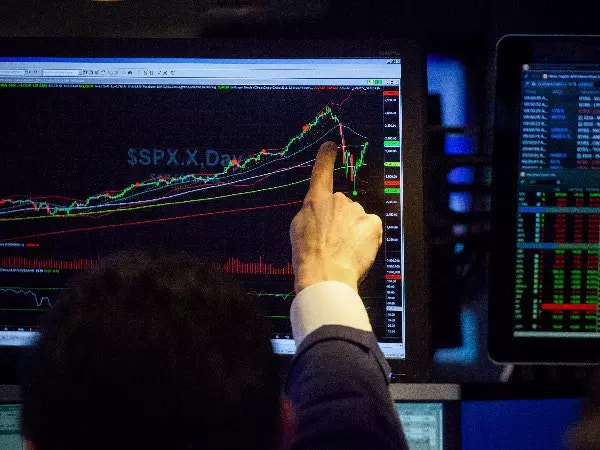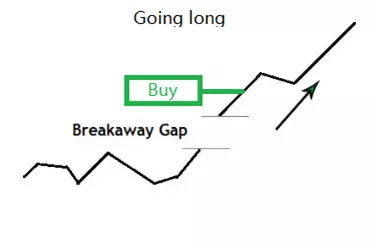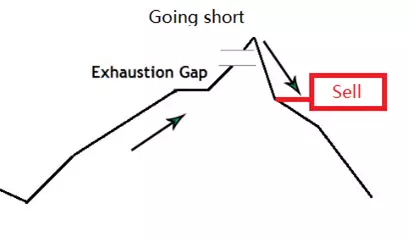What is gapping in forex?

What does gapping mean in forex?
Gapping in forex trading is when there’s a significant price move in a currency pair with little or no trading in between. This is caused by moves in the exchange rate due to underlying technical or fundamental factors.
Trading charts typically show the market price flowing, fluctuating from one point to another in a sequence. In most cases for forex pairs, the market opens at the same price level as the previous day’s closing session.

Note that past performance isn’t an indicator of future performance.
This can be due to macro-economic events taking place during that period. Some of the market-moving events include central bank announcements, geo-political factors, news reports, market sentiment, and more.
Note that forex markets are open 24 hours a day, thereby making occurrences of market inactivity usually few and far between. On occasion, gapping occurs during quiet times in the market like the weekend, typically between Fridays when the New York Stock Exchange (NYSE) closes, and the Sunday Asia opens.
What are the types of gapping in forex?
- Common gaps
- Breakaway gaps
- Runaway gaps
- Exhaustion gaps
1. Common gaps
As the name suggests, these are the most common price gaps that appear on a chart, and they aren’t necessarily caused by significant changes in trade volumes or market sentiment. The gap appears within the same trading range and the opening is typically caused by normal market forces.
As mentioned above, while gaps in forex trading may result from changes in market-moving events, common gaps tend to open and fill up quickly, with no major fluctuations in trade volume.
2. Breakaway gaps
A breakaway gap occurs when the price level rises beyond the support and resistance area on a trading chart. The gap serves as confirmation of a new trend, separating from the trading range established over time, opening at a higher or lower level than the previous closing session.
Unlike other gaps, the breakaway gap creates significant separation, generally attributed to a change in market sentiment as opposed to the normal deviation in the forex market. For instance, when the market shifts towards a bullish trend, the price opens at a higher level and trade volumes surge – confirming the breakaway from the previous trend.
3. Runaway gaps
A runaway gap signifies an area on a chart where an opening occurs because of an increase in the interest to trade a particular currency pair, following a period of inactivity in the market.
This gap tends to follow a breakaway gap, as traders that missed the initial uptrend or downtrend push the level – through their interest – to skip several chronological price points. It’s also known as a continuation gap because after a period of inactivity, the price level reopens at a significantly lower or higher level than the previous day’s session, mid-trend, and accelerates in the same direction.
4. Exhaustion gaps
An exhaustion gap occurs when the market is towards an end of a trend cycle, and the price makes a final push after an opening in the same direction before it reverses thereafter.
This gap signals an increase in trade volume by people who want to get in on the trend and move the currency pair’s price into overbought level. Traders can use this technical indicator to anticipate when the market will move in a reverse direction and take an opposite position. Remember that past performances aren’t a guarantee of future results.
How do you trade gaps in forex?
You can use gaps in forex markets as trading signals to spot areas on the chart that may give rise to opportunities to buy or sell a particular currency pair. Technical traders typically integrate gaps as part of their trading strategies to determine if a pattern emerges or when a new trend could likely begin.
Note that trading gaps in the forex market could be profitable, but it also involves assuming risk. We’ve compiled a few steps below to help you in using gaps to trade forex.
1. Identify your trading gap
First, you should identify the type of gap that appears on a trading chart. This is important as every gap requires different approaches and trading strategies.
2. Use technical analysis to confirm your trade signals
It’s important to remember that trading signals can often be false. You have to perform a thorough technical analysis on the market before taking a position on the future direction of the price movements.
This involves studying historical chart patterns and formations to determine possible entry and exit points. You can use technical indicators such as moving averages, Bollinger Bands, and stochastic oscillators to identify these opportunities.
3. Use stop-losses
As part of your risk analysis, you’ll have the option to set up stop-losses to protect your position if the market moves against you. This is an easy way to set exit prices upon opening a position.
A stop-loss is an order to your broker to automatically close your position if the price of the market goes beyond a certain point, limiting your losses on a trade. Note that with a normal stop, there’s potential for slippage due to the market gap occurring.
4. Apply a risk management strategy
Trading gaps tends to be risky, and there’s potential of losing more than the money you deposited as a result of leverage. When trading with leverage, you’ll only pay a fraction of the full value as your deposit to open a position.
Both your potential profits and losses will be magnified, as they’re calculated based on the full position size, not your deposit amount. Therefore, it’s important to have a solid risk management strategy in place to limit possible losses.
Gapping trading strategies
Here are some popular gapping trading strategies you can use:
Buy the gap
You’ll buy a currency pair after a gap appears and your analysis indicates that the price will rise. This is a bullish move, in which you go long in anticipation that the direction of the market will move upward after the gap occurred.

Sell the gap
You’d sell a currency pair after a gap appeared and the signal points to a downward movement thereafter. To make the most of the opportunity, you’d take a bearish position by short-selling the market – hoping that the price will continue to drop lower than the direction after the gap appeared.

Fade the gap
In this instance, you take a position against the direction that the market takes after the gap, absorbing the risk that you may lose in the short-term. The strategy is based on the expectation that the gap will be filled quickly, and the price will move in the opposite direction thereafter.
You can either sell while the market is going upward or buy when it’s dropping. It’s prudent to set up risk management measures to prevent significant losses if the market moves against you.
Note that all these gap trading strategies carry risk. It’s important to always monitor your position and take steps to manage your risk effectively. You can set up trading alerts to receive automated notifications – when your specifications are triggered – and take a position accordingly.
Gapping in forex summed-up
- Gapping in forex trading occurs when there's a price difference on a trading chart displaying an opening, and the price level either reappears at a considerably higher or lower point than the previous closing price
- There are four types of gaps in trading: common gaps, breakaway gaps, runaway gaps, and exhaustion gaps
- Gap trading tends to be risky, and it's important to set up risk management measures to mitigate possible losses
- There are different gapping strategies that you can use when trading forex such as buying the gap, selling the gap, or fading the gap
Practice trading gaps with forex
- Open an account to get started, or practice on a demo account
- Choose your forex trading platform
- Formulate strategies and monitor gaps
- Open and close positions on forex pairs
Trading forex requires an account with a forex provider like tastyfx. Many traders watch major forex pairs like EUR/USD and USD/JPY, which can be found in tastyfx's platform under the 'Major' pairs tab, for potential opportunities based on economic events such as inflation releases or interest rate decisions. Economic events can produce more volatility for forex pairs, which can mean greater potential profits and losses as risks can increase at these times.
Your profit or loss is calculated according to your full position size. Leverage will magnify both your profits and losses. It’s important to manage your risks carefully as losses can exceed your deposit. Ensure you understand the risks and benefits associated with trading leveraged products before you start trading with them. Trade using money you’re comfortable losing.
This information has been prepared by tastyfx, a trading name of tastyfx LLC. This material does not contain a record of our trading prices, or an offer of, or solicitation for, a transaction in any financial instrument. You should not treat any opinion expressed in this material as a specific inducement to make any investment or follow any strategy, but only as an expression of opinion. This material does not consider your investment objectives, financial situation or needs and is not intended as recommendations appropriate for you. No representation or warranty is given as to the accuracy or completeness of the above information. tastyfx accepts no responsibility for any use that may be made of these comments and for any consequences that result. See our Summary Conflicts Policy, available on our website.
